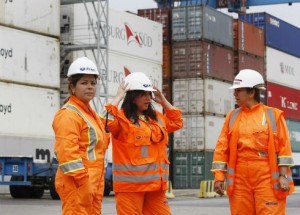By Stephanie Leutert
LatIntelligence
Over the last decade, poverty, and inequality have fallen throughout Latin America.

Behind these positive trends are external factors, such as high global commodity prices and substantial foreign direct investment flows, as well as internal influences, including Latin America’s growing middle class, increased consumption, and successful government-run conditional cash transfers (which offer money to low-income families who keep their kids healthy and in school).
But another less talked about factor moving the region toward greater economic development is the millions of Latin American women in the workforce.
According to an August 2012 World Bank report, Latin American women have been responsible for 30 percent of the region’s extreme poverty reduction in the past decade, as a result of their increased workforce participation and higher earnings.
Women’s income has had an even greater effect on the lowest rungs of the socioeconomic ladder, reducing the severity of poverty more than twice as effectively as men’s earnings. And, as in other places, the global economic downturn hit men’s incomes the hardest. In response, Latin American women picked up the slack, causing more than half of 2009’s poverty reduction.
Still, these proven economic engines face huge challenges.
Women continue to be employed disproportionately in less productive sectors. Men also continue to far outnumber women in corporate leadership positions across industries, and, like most of the world, studies report that Latin America’s women are often paid significantly less than men for the same labor. Even when Latin American women make it to the top of their field, 61 percent report some form of discrimination at work.
Having more Latin American women in the workplace isn’t just an issue of equity — it’s also good for business. Study after study shows that more women mean better bottom lines.
An August 2012 Credit Suisse report found that when companies have one woman or more on their boards, they perform significantly better than companies that don’t (60 percent of Latin American companies’ boards do not have a single female member).
And how much better do these more diverse companies do? Stocks of large companies that had women on their boards performed 26 percent better than those that didn’t.
If other nations’ histories are any guide, one can expect more of the region’s women to come into the workplace. And this is likely to increasingly center the conversation on the tough juggling act of work, family, and other responsibilities — à la Anne-Marie Slaughter’s now widely read Atlantic article — that many working women (and men) throughout the region and world confront.
Despite the challenges for Latin American women, the numbers make the opportunities clear: women in the workforce, and especially women in leadership positions, are good for Latin America — for its families, for its businesses, and for its future.
Published in conjunction with Latin America’s Moment at the Council on Foreign Relation
Stephanie Leutert is a research associate at the Council on Foreign Relations who works with the Latin America program.




